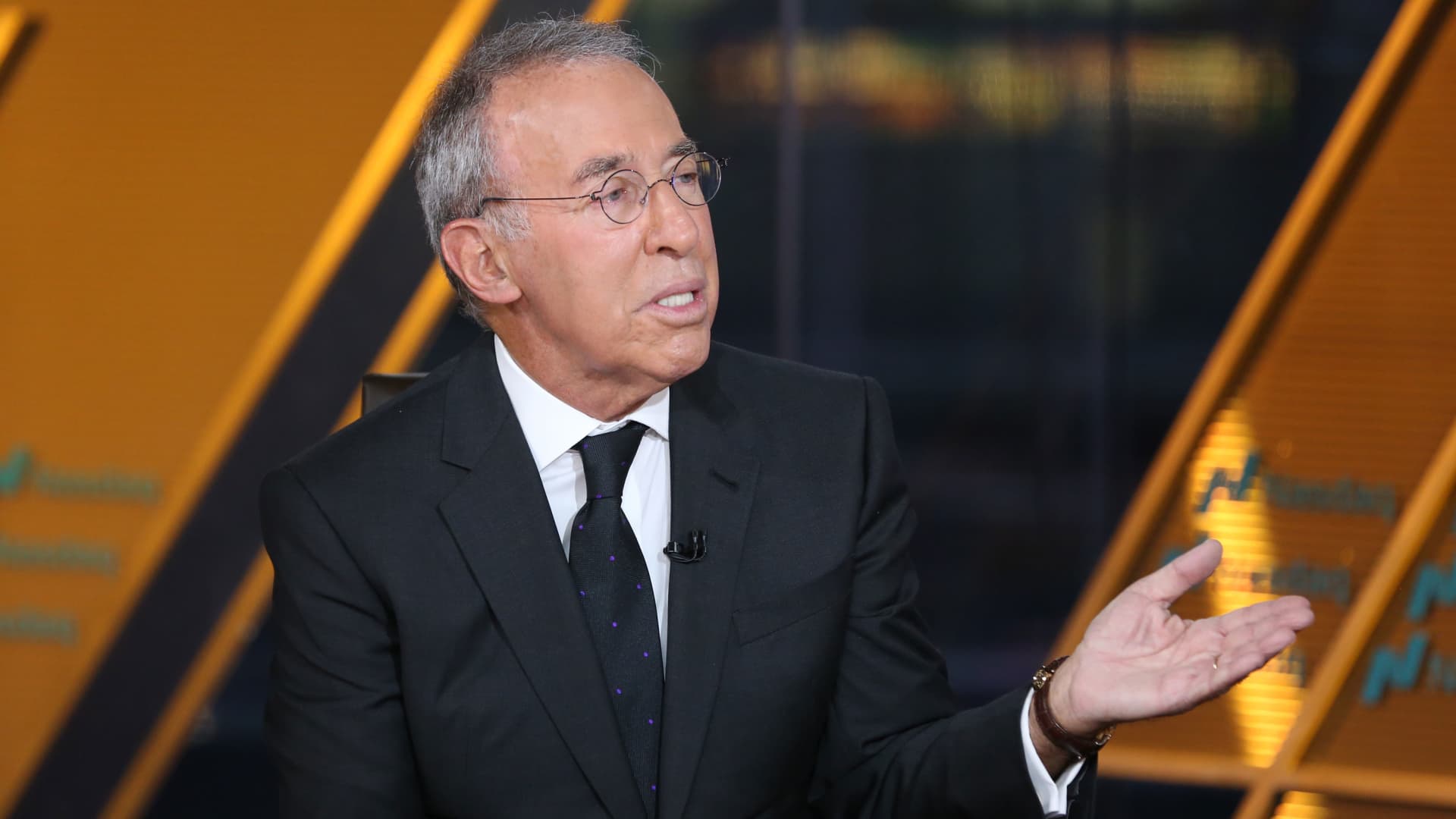S&P 500 touches lowest since September, but is off worst levels of session: Live updates

Traders work on the floor at the New York Stock Exchange in New York City, U.S., March 31, 2025.
Brendan McDermid | Reuters
The S&P 500 fell on Monday, but was off of its session-lows after falling back into correction territory earlier in the trading day, as traders nervously looked ahead to President Donald Trump’s tariff plans.
The S&P 500 dropped 0.4%, while the Nasdaq Composite fell 1.2%. The Dow Jones Industrial Average added 73 points, or 0.1%.
Tech giants Nvidia and Meta Platforms fell 4% and 1%, respectively, to lead markets lower. Tesla also lost 4%. Tech stocks have struggled to recapture their meteoric rise from last year that was spurred by rising artificial intelligence sentiment. AI darling Nvidia, for example, is now more than 31% off of its 52-week high. Investors seeking safety were pushing some Dow components like Coca-Cola and Walmart higher.
The broad market index is more than 10% below a record set in February. It also hit its lowest level since September on Monday. The tech-heavy Nasdaq also reached levels not seen since September and is 16% below its all-time high set in December.
A slew of tariffs previously announced by the Trump administration will go into effect on Wednesday — what Trump has called “Liberation Day” — including a 25% levy on “all cars that are not made in the United States.” The president is also expected to announce his plan for reciprocal duties aimed at countries that impose tariffs on U.S. imports on April 2.
Trump did little to assuage fears over the weekend, with The Wall Street Journal reporting Sunday that the president had in recent days pushed his advisors to get more aggressive when it comes to tariffs. In a Saturday interview with NBC News, Trump said that he “couldn’t care less” if foreign automakers raise their prices due to these new tariffs.
Trump’s rhetoric as April 2 approaches has culminated in a renewed sense of worry that the tariffs will significantly slow the economy, and could perhaps even be a catalyst for a recession. Monday’s market moves are a stark reversal in what could have been a promising uptrend in the middle of March, where stocks posted a brief comeback that saw the S&P 500 recover from correction territory. Investors began to believe the tariffs might not be as broad-based as some had feared, especially after the president said last week that the duties could end up being “lenient.”
Those hopes were dashed quickly once Trump began elaborating further on the tariffs. In concert with the president’s announcement last week for the 25% tariff on imported cars, he also noted that the tariffs would be in place for the entirety of his second term. On Sunday, Trump further unsettled investors by asserting that Wednesday’s reciprocal tariffs will take aim at all countries, and not just the roughly 10 to 15 nations that have a pronounced trade deficit with the U.S.
“We continue to trade with the backdrop of tariff uncertainty and a shroud of secrecy about what may come next,” said Jay Woods, chief global strategist at Freedom Capital Markets. “As a result, investors sell first and wait. It has all the makings of a panic sell-off where a snap back rally on the horizon.”
The overarching sense of worry now has some data behind it. Economists polled in the CNBC Rapid Update survey points to first-quarter economic expansion of just 0.3%, well below the 2.3% growth seen in the fourth quarter.
SPX 1-year chart
Monday marks the final day of what has been a tumultuous month and quarter for Wall Street. The S&P 500 dipped into correction territory in March after hitting a record in February. It was 9.2% below its all-time high through Friday’s close.
The S&P 500 is down 7% for the month, on pace for its biggest one-month slide since September 2022, when it dropped 9.3%. The Nasdaq has lost 9% in March, while the Dow has fallen 5%.
For the quarter, the S&P 500 was down 6.3%. That puts it on pace to snap a five-quarter winning streak. The Nasdaq has lost 12.3% this quarter, which would mark its biggest quarterly pullback since a 22.4% plunge in the second quarter of 2022. The Dow has shed 2.9% in the first three months of 2025.










